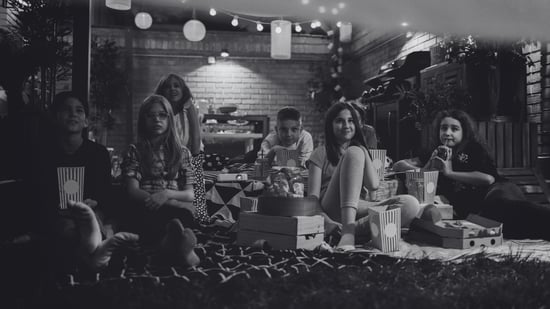No, Candyman is not real. The hook-handed ghost who appears when you say his name five times in a mirror was created for fiction. But his story feels real because it pulls from true tragedies, real places, and fears that already exist in the world.
The Origins of Candyman
Candyman was first introduced in Clive Barker’s 1985 short story The Forbidden. The story explored how belief and fear could give life to urban legends. When director Bernard Rose adapted it into the 1992 film Candyman, he moved the story from Liverpool to Chicago’s Cabrini-Green housing projects. That change grounded the horror in reality. Cabrini-Green was infamous for poverty, neglect, and crime, which made it a perfect setting for a story about how myths grow in forgotten places. Tony Todd’s performance as Candyman made the character unforgettable. His calm voice, striking presence, and tragic backstory gave the character depth and sadness that most movie monsters lack.
The Real Murder That Inspired the Myth
The question “Is Candyman real?” became more complicated after the discovery of a real-life murder that mirrored one of the film’s most disturbing scenes. In 1987, Ruthie Mae McCoy, a woman living in Chicago’s ABLA housing complex, called 911 claiming someone was trying to break into her apartment through her bathroom mirror. Her call was dismissed as confusion. When police entered her apartment days later, they found her dead. It turned out that the medicine cabinets in some buildings were built back-to-back, with only a thin wall between units. Intruders could remove the cabinet and crawl through the wall into the next apartment. This horrifying design flaw became one of the direct inspirations for Candyman.
How the Mirror Became Part of the Legend
The idea of summoning a spirit by saying its name in the mirror did not start with Candyman. It comes from old urban legends, most famously the story of Bloody Mary. Children would dare each other to say her name three times in the mirror to see if she appeared. Candyman took that familiar folklore and transformed it into something darker and more adult. The mirror became a symbol of fear, guilt, and curiosity. It represented the thin line between what people imagine and what they bring to life through belief.
Cabrini-Green and the Fear Behind the Fiction
Cabrini-Green was not just a backdrop. It was a real place that represented everything terrifying about urban neglect. The housing project was built with good intentions but quickly became a symbol of failed policy and economic inequality. The violence, isolation, and fear that surrounded Cabrini-Green gave Candyman an authenticity that made audiences wonder if something supernatural could really be hiding there. The movie’s horror worked because the real world around it was already frightening.
A Modern Take on the Myth
In 2021, director Nia DaCosta and producer Jordan Peele revived Candyman for a new generation. Their version expanded the idea of who Candyman was. Instead of a single ghost, he became a collection of spirits born from racial injustice and trauma. Each Candyman was another victim of violence, another story that refused to die. This retelling made the legend feel more alive and relevant. It showed how myths can evolve to fit new times while still carrying the same emotional truth.
Why People Still Ask If Candyman Is Real
The line between fact and fiction is blurred because so much of Candyman was built from real history. The Ruthie Mae McCoy case happened. Cabrini-Green existed. People really did fear their own homes. That connection to reality makes the myth hard to separate from truth. Even people who know it is fiction hesitate before saying his name in the mirror. That pause is the power of a good horror story. It makes you believe, even for a second, that something could be watching.
Candyman may not exist, but the fears that created him are very real. He represents the idea that pain, injustice, and memory can live on long after the people who experienced them are gone. He is not a ghost haunting mirrors. He is the reflection of the world that made him.
.png?width=150&height=84&name=Your%20Home%20for%20Horror%20(2).png)
.png?width=80&height=80&name=Horror%20film%20festival%20Halloween%20Logo%20in%20Black%20and%20White%20Red%20Elegant%20Style%20(7).png)
.png?width=200&height=200&name=Horror%20film%20festival%20Halloween%20Logo%20in%20Black%20and%20White%20Red%20Elegant%20Style%20(7).png)


